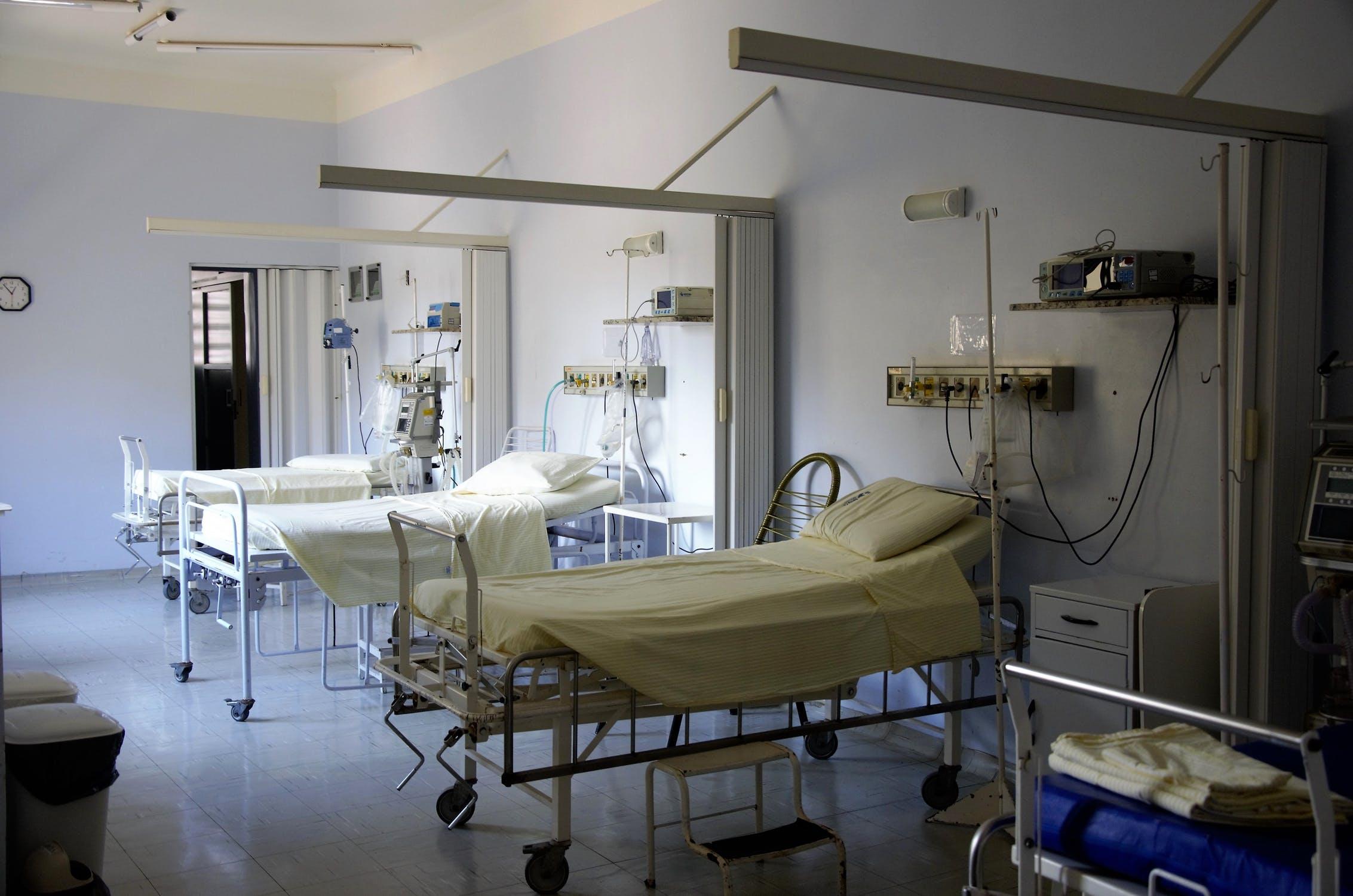Savita : Timeline
- Home
- Information
- The tragic death of Savita
- Savita : Timeline

TIMELINE OF SAVITA'S IN GUH
Oct 21 Oct 22 Oct 23 Oct 24 Oct 25 Oct 26 Oct 27 Oct 28
Sunday / 21 October
- Savita went to Galway University Hospital complaining of back pain. Dr Olutoyele Olatunbosun, a senior house officer in gynaecology, was on call in the obstetrics unit and, as Savita had a history of back pain, she sent her home.
- Savita returned to the hospital around 1pm and Dr Olatunbosun found that her cervix was dilated and that the membrane surrounding the foetus was bulging into her uterus. She asked specialist obstetrics registrar, Dr Andrew Gaolebale, who was senior to her, for a second opinion.
- Dr. Andrew Gaolebale, specialist registrar in obstetrics, informed Mrs. Halappanavar that her pregnancy was no longer viable. He felt that, although not possible to predict how long it would take, the miscarriage would take place within twenty-four hours.
- Dr Olatunbosun sent a blood sample to the lab to establish a "baseline", in case Savita needed blood following the miscarriage, but never followed up the results.
- It subsequently emerged that the blood test showed a raised white blood cell count, which is an indicator of possible infection, but the result was not reviewed until 5.24pm on Monday by an unidentified member of staff. The results were not actually noted until Wednesday morning, when Savita was very ill.
- Dr. Gaolebale was not given blood test results, nor told when Savita’s membrane had ruptured.
Oct 21 Oct 22 Oct 23 Oct 24 Oct 25 Oct 26 Oct 27 Oct 28
Monday / 22 October
- Dr Astbury reviewed Savita on her rounds at 8.30am and found no signs of infection.
- The initial blood test result was looked at by unidentified member of staff. No action was taken.
- At 12.30am on Monday, Savita's membranes ruptured. She was attended to by midwife Miriam Dunleavy at this time. A ruptured membrane leaves an open passage to the uterus, so there is always concern about infection.
- Dr. Astbury sent Savita for an ultrasound scan to determine whether the foetus was alive or dead. The rationale for this was in terms of the risk of sepsis with ruptured membranes and therefore the need to avoid her sitting on the ward undelivered for a protracted period after foetal demise. This was discussed with the patient.
- Dr Astbury prescribed an antibiotic called Erythromycin at four times a day, to lessen the risk of infection. She was unaware of the blood tests suggesting Savita may already have had a possible infection. Consultant microbiologist, Dr Derbhile Keady told the inquest that the use of this antibiotic as a prophylactic was not part of the microbiological guidelines in an obstetric setting.
- Dr Astbury did not feel that miscarriage was inevitable.
Oct 21 Oct 22 Oct 23 Oct 24 Oct 25 Oct 26 Oct 27 Oct 28
Tuesday / 23 October
- Savita requested medication to hasten the baby’s miscarriage, around 8.20 am as she was suffering from emotional distress. This request was denied by Dr. Katharine Astbury on the grounds that there was no risk to Savita’s life and the law does not permit abortion on the grounds of poor foetal prognosis.
- Midwife, Anne Maria Burke, came to check the foetal heartbeat around 11 or 12 and chatted with Savita and her friend, Mrudula Vaseali, about the reasons for not being allowed to have a termination in Ireland. Savita mentioned the Hindu religion in India, and Ms Burke said Ireland was a “Catholic country".
- By 7pm on Tuesday, 43 hours had passed since Savita's membranes had ruptured. Under hospital policy, women in her condition were required to have their vital signs – pulse, temperature, blood pressure, respiratory rate – monitored every four hours, because of the risk of infection. This did not happen in Savita’s case.
- At 7pm Elaine Finucane, student midwife, took her pulse. Her heart rate was 114 beats per minute, from the usual rate of 89, and 110 beats per minute. An elevated pulse rate is one of four classic signs of sepsis. Ms Burke bleeped the junior hospital doctor on call, Dr Ikechuckwu Uzocwu, at 7.35pm. She said she asked him if Ms Halappanavar could have a bath and informed him of the elevated pulse.
- Dr Ike said that he was not told there was an elevated pulse. He was contacted between 9pm and 11pm – by which time Ms Burke had gone off duty. He said he was told that Savita was "complaining of weakness" but that her vital signs were normal.
- Dr. Ike looked in on her at 1am, when she was sleeping, so he did not disturb her.
- Apart from another reading at 9pm, Savita's pulse was not checked again until over 9 hours later, in breach of hospital policy which says it should be checked every four hours.

Oct 21 Oct 22 Oct 23 Oct 24 Oct 25 Oct 26 Oct 27 Oct 28
Wednesday / 24 October
- At 4.30 am Ms Dunleavy is called to the room as it was cold and Savita was shivering. The radiator was found to be not working. She gave her paracetamol to bring down her temperature but didn't check her pulse.
- At 5.15am Ms. Dunleavy checked Savita again and found her temperature had lowered.
- Over the next 90 minutes, Savita's condition deteriorated rapidly. At 6.30 am “her heart is pounding out of her chest” and she was feverish.
- At 6.30 am Dr. Ikechukwu Uzockwu did his rounds and noted Savita’s deterioration. He made notes on her chart that there was a foul-smelling discharge, and also a raised pulse of 160 and raised temperature.
- Dr Ike’s opinion was that the source of sepsis was the membrane, ie chorioamnionitis. He told the inquest he called the specialist registrar, Dr Campbell, to inform her of his concerns. However, Dr. Campbell did not attend to Savita.
- Dr. Ike did not inform the hospital’s microbiologist, even though this is the procedure mandated in hospital guidelines on the management of sepsis.
- Dr. Knowles, Microbiologist, says that quick delivery of the foetus should have happened once there was a diagnosis of chorioamnionitis, no evidence in the notes that this was discussed.
- Savita was put on a drip and stabilised.
- The blood sample taken at 7am did not reach the laboratory until after 10am that morning. Microbiologist, Deirbhile Keady, said that when the sample result came back positive for infection, Savita was already on the correct antibiotics.
- A lactate test – a key indicator of onsetting sepsis – taken at the same time and dispatched with her bloods, was returned untested because it was sent to the wrong place The sample was sent to a laboratory to check lactate levels at around 7am on Wednesday, October 24, but returned as the test should have been carried out at a point of care unit on the ward.
- Dr. Astbury did not read the notes in relation to the suspected sepsis, despite having the chart.
- Dr. Anne Helps, Registrar, did not pass information regarding Savita’s deterioration to Dr. Astbury. She switched rounds with Dr. Ike on Wednesday, but although she remembers being told about the spike in temperature, she does not remember reading about the discharge, nor mentioning it to Dr. Astbury when reading her the notes.
- Ward Nurse Patricia Gilligan, noticed Savita’s rapidly deteriorating state at approx. 8.10am. She moved Savita to a room closer to the nurses’ station where she could be watched more closely. She felt that Savita was suffering from a septic abortion, and did not inform Dr. Astbury as she thought that this was evident from the chart.
- Dr. Astbury was not aware that the white-cell count had risen to 16.9 as the results had not been documented. Her temperature had come down and her pulse was settling. Dr Astbury reviewed Savita at 8.25 am. At this point her temperature had come down to 37.9 degrees and her pulse to 144bpm. (She had spiked a temperature of 39.6 degrees, with a heart rate of 160 and blood pressure of 95/55 in the early morning.) It seemed like Savita was responding to treatment.
- Dr. Astbury informed Savita that if the source of infection was not found, they might have to terminate the pregnancy, regardless of the foetal heartbeat.
- Staff midwife, Miriam Donleavy had never seen anyone get so sick so fast.
- More tests were carried out to rule out a urinary infection.
- Dr Astbury approached a colleague, Dr Geraldine Gaffney, to discuss her view that they needed to go ahead with a termination regardless of the foetal heartbeat. Dr Gaffney agreed, and offered to write a note to be included in the medical records to this effect. They decided to medically induce the foetus.
- Dr Astbury took a portable scanner back to the ward where she discovered the foetus had already died.
- Dr Knowles, Microbiologist says that the antibiotic treatment Savita Halappanavar received from 7am to 1pm on Wednesday was not effective. She says that a broader range of antibiotics, that covered e-coli, should have been considered as Ms Halappanavar deteriorated.
- E-coli antibiotics began at 1pm
- Savita's lactate level was 8.8 - the key indicator of severe sepsis - when finally checked again that afternoon shortly before she delivered a dead foetus.
- Savita was taken to theatre at 3.15pm to have an IV line inserted for antibiotics and she spontaneously delivered her dead baby daughter, Prasa. She was taken to the high-dependency unit at 4.45pm and in the early hours of the morning she was moved to intensive care.
Oct 21 Oct 22 Oct 23 Oct 24 Oct 25 Oct 26 Oct 27 Oct 28
Thursday / 25 October
- It took up to 48 hours to obtain full results from the blood culture samples taken from Ms Halappanavar on the Wednesday. By the Thursday morning, they had an idea that E Coli was involved and full identification followed the next day.
- Dr Derbhile Keady, a consultant microbiologist, told the inquest that it was very unusual for maternity patients to suffer ESBL infections.She went on to say that she had contacted four other maternity units around the country and discovered that, of results recorded over a four-year period, Savita's was the only blood culture to come back as ESBL e-coli.
- At 3am Savita’s condition had worsened and she was transferred to intensive care.
- Dr. Astbury reviewed Savita at 8.40am.
- Dr.Astbury reviewed Savita again at 5.25pm.
Oct 21 Oct 22 Oct 23 Oct 24 Oct 25 Oct 26 Oct 27 Oct 28
Friday / 26 October
- At 10am Savita was critically ill as test results showed septicaemia caused by ecoli ESBL - Extended Spectrum Beta Lactamase – which is particularly difficult to treat with antibiotics. She is given powerful antibiotics to try to counter her rare E.coli infection.
- Dr Naughton took over care of Ms Halappanavar from Friday, October 26 until her death on the morning of Sunday, October 28, 2012. He diagnosed Savita as being in a state of profound septic shock
- Dr. Naughton says that medics had by that stage been treating Mrs Halappanavar with the correct antibiotics, but that the sepsis had "set off a cascade of events that led to an inflammatory action that just didn't stop because you are getting at the right bacteria".
- Dr. Naughton says that septic shock is very difficult to reverse.
- Dr. Astbury received call in Ballinasloe Hospital at 1.30pm to tell her that Savita’s condition has deteriorated further.
- At 8pm Dr. Astbury called to see her patient.
Oct 21 Oct 22 Oct 23 Oct 24 Oct 25 Oct 26 Oct 27 Oct 28
Saturday / 27 October
- There is no improvement in Savita’s condition. Friends called to Savita and rallied around Praveen.
- Dr Una Conway rang Dr. Astbury to let her know Ms Halappanavar had deteriorated further and was not expected to recover.

Oct 21 Oct 22 Oct 23 Oct 24 Oct 25 Oct 26 Oct 27 Oct 28
Sunday / 28 October
- Savita was sedated with morphine and on a ventilator, her body was swollen, her abdomen distended, her fingers flexed tightly and her feet extended and stiff.
- At 12.45 the alarms went off and Savita suffered cardiac arrest. The consultants attempted CPR. Nurse Gately went out to Praveen to ask if he wanted to be present, which he did. Savita did not respond.
- Savita’s time of death was recorded at 1.09 pm.
- Preliminary autopsy report showed Cause of Death to be E.Coli ESBL Septicaemia documented ante-mortum.
- Dr. Michael Tan Chien Sheng, a consultant pathologist in UHG carried out the post mortem on the foetus on November 2nd. It was a still born foetus at 17 weeks gestation and incompatible with life.
- Dr. Frans Colesky carried out the post mortem on the placenta.
Oct 21 Oct 22 Oct 23 Oct 24 Oct 25 Oct 26 Oct 27 Oct 28
Sources
- http://www.belfasttelegraph.co.uk/news/local-national/republic-of-ireland/savita-halappanavar-case-i-didnt-read-significant-notes-on-medical-chart-confesses-doctor-29188657.html
- http://www.irishexaminer.com/breakingnews/ireland/microbiologist-at-savita-inquest-patients-have-different-outcomeswe-dont-always-know-why-590968.html
- http://www.independent.ie/irish-news/courts/savitas-doctor-had-planned-to-go-ahead-with-termination-29185745.html
- http://www.independent.ie/irish-news/courts/unavoidable-tragedy-or-unnecessary-death-29193458.html
- http://www.independent.ie/irish-news/nurse-certain-it-was-septic-abortion-29193439.html
- http://www.independent.ie/irish-news/shortcomings-in-care-of-savita-have-ramifications-for-all-state-hospitals-29194701.html
- http://www.irishtimes.com/news/health/savita-eventually-told-termination-was-only-option-consultant-obstetrician-says-1.1355316
- http://www.herald.ie/news/savita-not-on-effective-antibiotic-treatment-for-vital-six-hours-doctor-29194191.html
- http://www.irishtimes.com/news/health/no-impact-from-blood-test-delay-consultant-tells-savita-halappanavar-death-inquest-1.1357637
- http://www.independent.ie/irish-news/savita-blood-sample-returned-inquest-told-29193105.html
- http://www.thejournal.ie/savit...
Information
- New must-read book
- Letters Unpublished
- Down Syndrome and Abortion the facts
- Joint Committee on Abortion
- Citizen's Assembly
- Planned Parenthood exposed as selling parts from aborted babies
- Clare Daly's Abortion Bill
- Pregnant? Need help?
- The tragic death of Savita
- 90% don't abort
- A 'fatal' abnormality
- Abortion for mental health
- Committee Hearings: 2013
- Expert Group: 2012
- CAHR: 2001-2007
- Government Reports: 1999-2000
- Medical Council
- Other Offical Reports
- Abortion: The Scientific Truth
- History of pro-life in Ireland and the push for abortion
- The Problem with Facebook's Factchecker
- VIDEO: 5 things they said would not happen
- New must-read book
- Abortion bill 2025